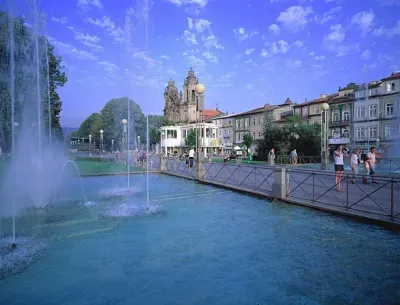Igreja de Sao Vicente
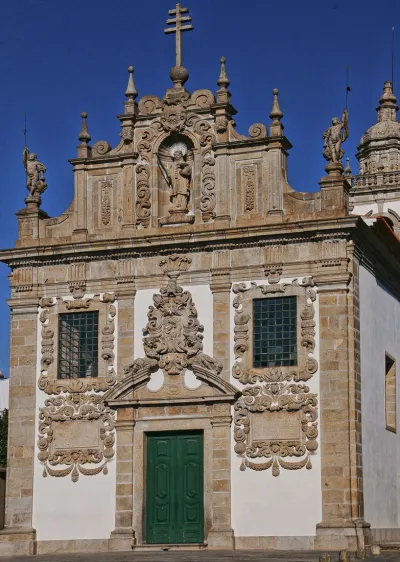
Built in 1565 and restored in 1691, São Vicente sits on the site of a much earlier Visigoth church. As with many catholic churches the rather functional exterior does not betray the luxurious interior.
Capela São Frutuoso
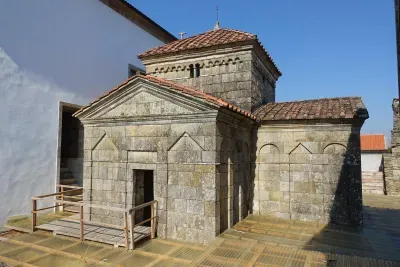
The Chapel of São Frutuoso was, incredibly, first built by the Visigoth kingdom in the sixth century AD. This makes it some 1500 years old, and one of few such structures to exist anywhere in Portugal. Today its squat Greek cross form and plain stone exterior is somewhat overshadowed by the much later Church of São Salvador, which is connected to it on one side.
Praça da República
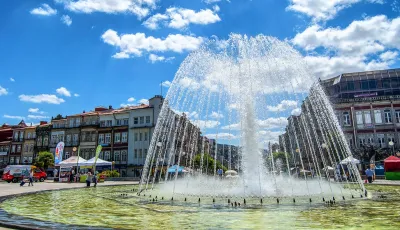
As with other squares of the same name, Praça da República (Republic Square) continues the Portuguese tradition of being one of the most important public spaces in Braga. Located on the western side of the city's historic centre, it comes alive each day from mid-morning to late into the evening. During this time, it is filled with locals who come to enjoy a bite to eat in the cafes and restaurants that line the square, including Café Vianna and Café Astória, which have both been serving customers for around 150 years.
Congregados Basilica
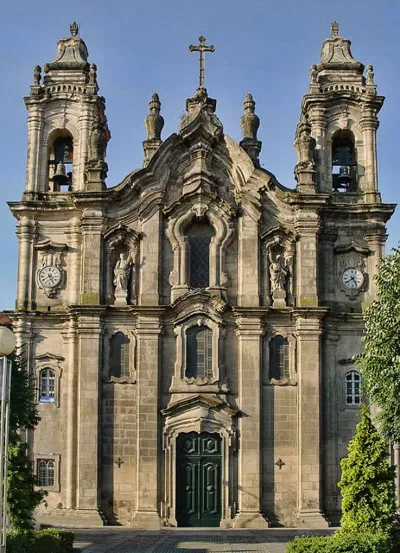
Work began on the Basilica of the Igreja dos Congregados in the early 18th century when baroque styling was all the rage. By the time it was finished in the 1960s rococo and neoclassical had been and gone. The result, all the same is a stunning church both inside and out.
The church was designed by architect André Soares and features two bell towers. The façade also has two notable statues by sculptor Manuel Nogueira da Silva - these represent saints Filipe de Nery and Martinho de Dume and were the final part of the church to be completed in 1964.
Santa Barbara Garden
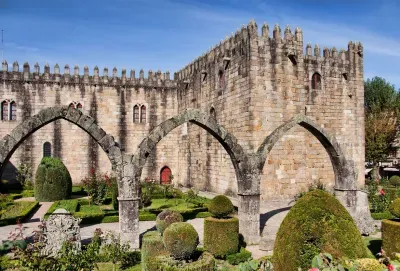
These small but attractive public gardens are located adjacent to the eastern wing of the 14th century Archbishop's Palace. The garden takes advantage of the historic backdrop and also incorporates the medieval arches that remain of an arcade from the palace. Laid out in the 1950s the garden was designed by Jose Cardoso da Silva in the Romantic style, in keeping with its surroundings.
Archbishop's Palace
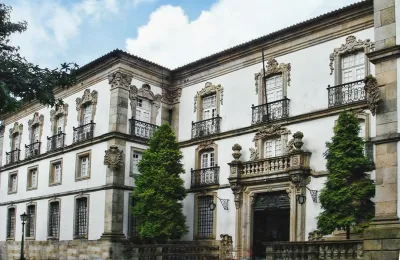
Set between the Santa Barbara garden and Praça do Municipio is the Archiepiscopal Court (Paço Arquiepiscopal), one of Braga's most significant historic buildings. The palace is in fact is a set of three interconnected buildings each with its own character reflecting the different styles and periods in which they were built.
Biscainhos Museum

Located in a 16th century manor house, the museum has a permanent collection of furniture, ceramics, glass and clocks displayed in situ to recreate the decor of an 18th century manor house
Igreja da Misericordia

This 16th century church is Braga's most important legacy of the renaissance period. It contains an impressive baroque carved altar
Arco da Porta Nova
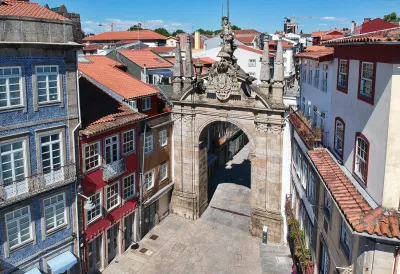
Translating from the Portuguese as the Arch of the New Gate, the Arco da Porta Nova is an ornamental gateway leading into the historic centre of Braga from the west. Located on the pedestrianised Rua do D. Diogo de Sousa, it was constructed to a design by architect André Soares in the 1770s, although a gate has stood in its place since the city walls were completed in the late 1300s.
Braga cathedral
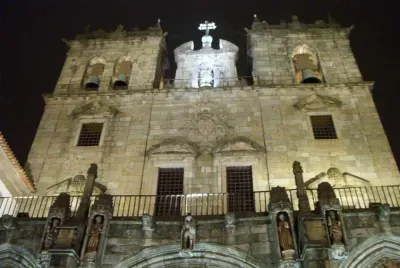
Built between 1070 and 1093 on the remains of a Roman temple the Sé has had many facelifts over the years. From it's Romanesque roots it has accumulated a mixture of architectural styles encompassing Gothic, Baroque, Manueline and Renaissance.
Inside the cathedral is a museum with a collection of relics.
